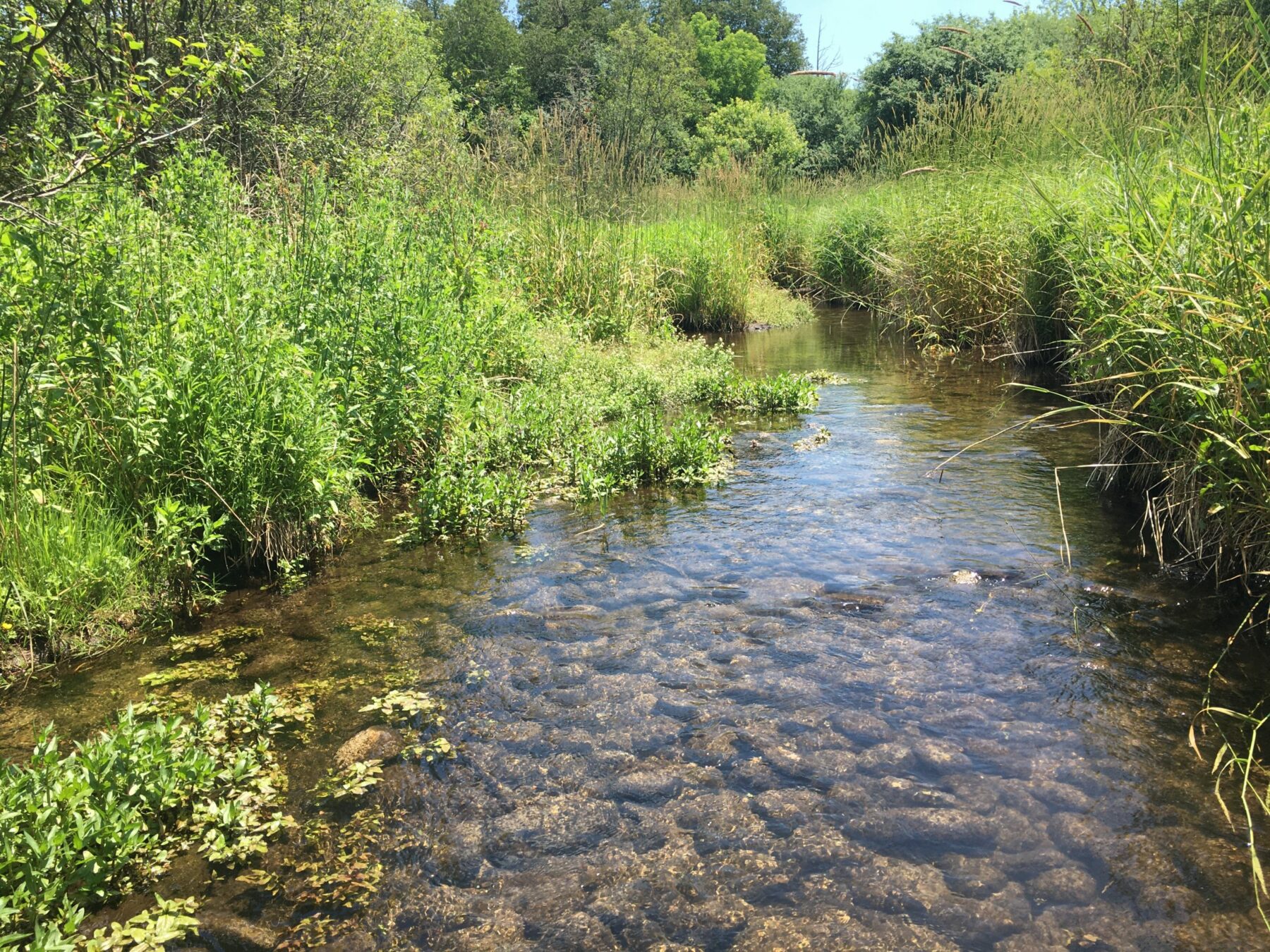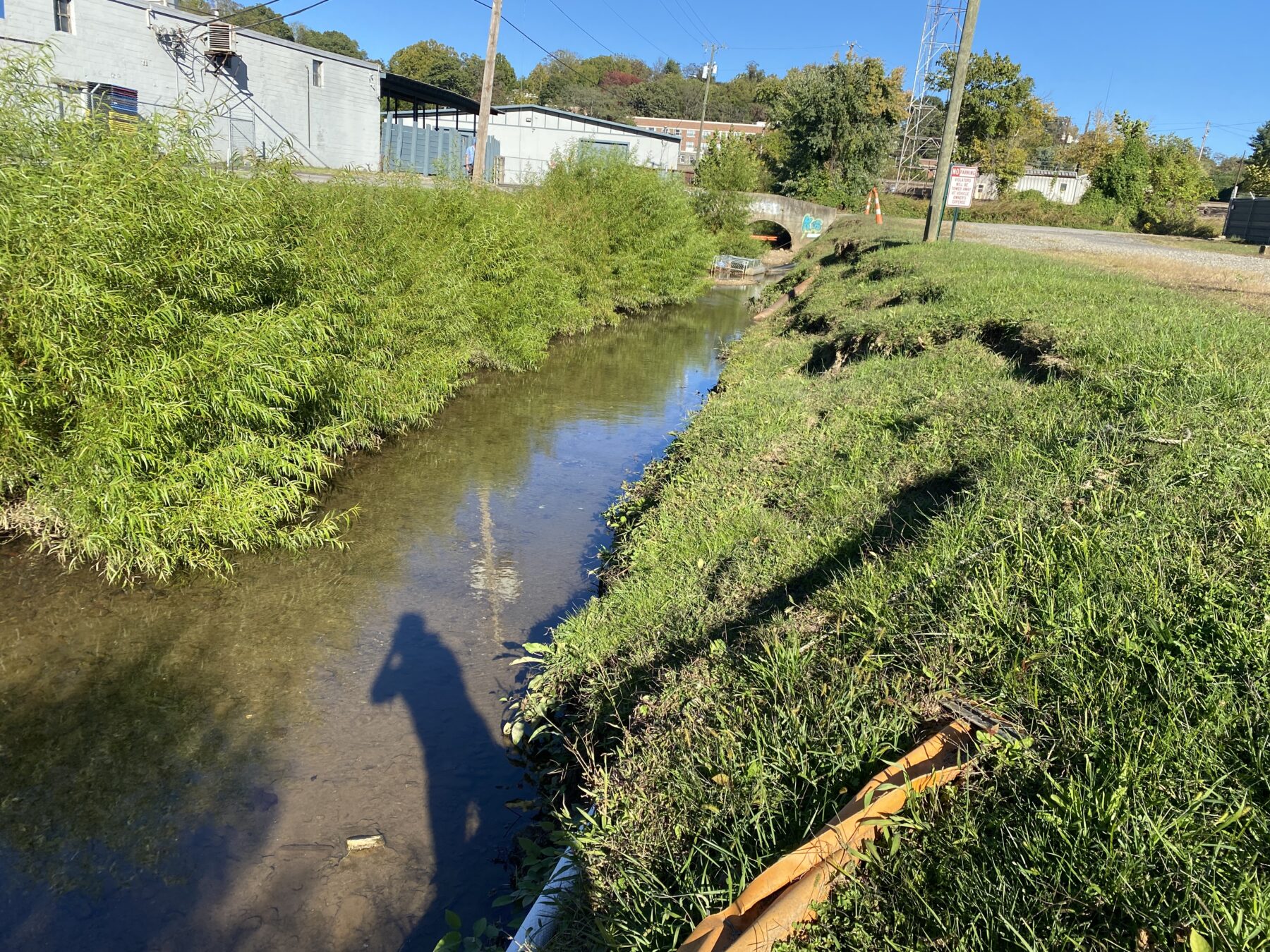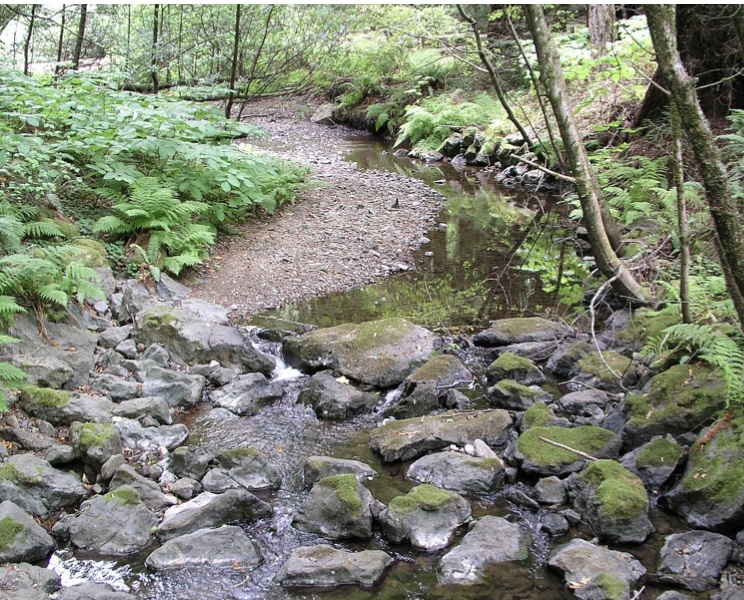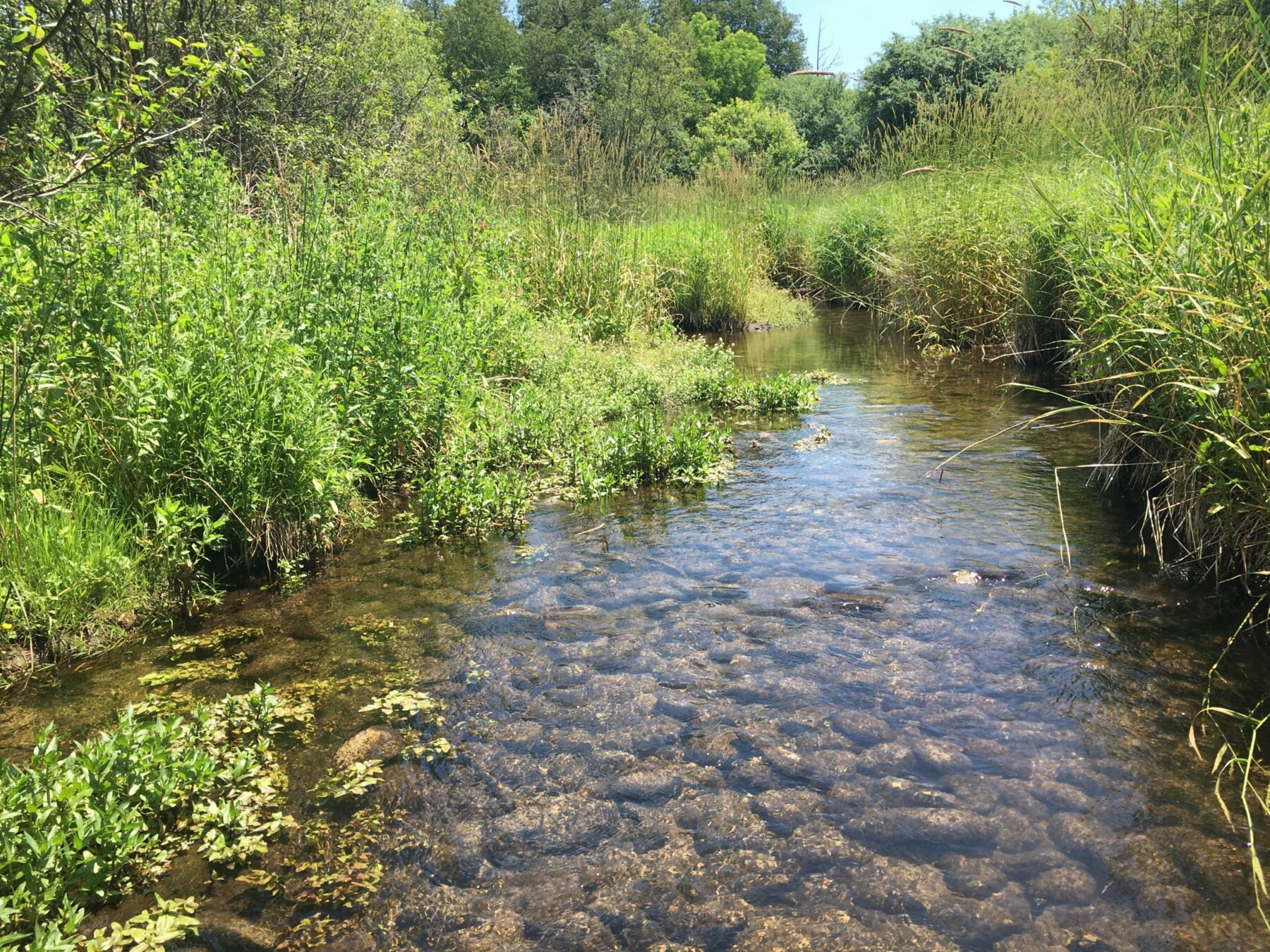
While walking alongside a stream on your property or nearby park, have you noticed any rapid stream bank changes, especially after rain events? Regular visitors may observe the stream channel widening, steeper slopes, and even missing chunks of the stream bank. Have you ever wondered what defines a healthy streambank?
North Carolina is growing, with an estimated 100,000 new residents arriving every year. In response, more homes, apartment complexes, parking lots, and streets are constructed in local communities. The increase in impervious (hardened) surfaces prevents rainwater from soaking into the ground, increasing stormwater runoff and delivering rainwater to local waterways at a higher volume and velocity. Just 1” of rain falling on an acre parking lot can generate over 27,000 gallons of runoff into our urban streams! The intensified runoff that occurs in more developed landscapes can cause streambanks to erode at a faster rate, especially where streams do not have a healthy riparian buffer.
What is a Riparian Buffer?
A riparian buffer is a vegetated area alongside streams, rivers, wetlands, and lakes. A healthy riparian buffer contains a diversity of native trees, shrubs, grasses, and flowering plants. Riparian buffers provide many benefits for human and ecological communities: improving water quality, streambank revitalization, regulating temperature, flood control, habitat for wildlife, and aesthetic value. Riparian zones act like a sponge, soaking in precipitation and filtering stormwater runoff. Plants growing in these habitats help stabilize the streambank as their roots hold the soil in place, reducing streambank erosion.
What Does a Healthy Stream Look Like?
A 2020 Water Quality Assessment by the North Carolina Division of Water Quality revealed that 70% of N.C. streams are damaged and impaired, requiring some form of streambank repair. In particular, virtually all urban streams need streambank repair or reconstruction to restore healthy conditions – projects that require sensitive engineering and permitting to accomplish.
Here is an example of a stream with a poor riparian buffer. Below is an image of Nasty Branch (AKA Town Branch), located in the River Arts District of Asheville.

On the right side of the stream, the slope of the bank is steeper and shows evidence of slippage and soil displacement. A steep bank with no native vegetation will continue to erode. The solution includes planting a mix of native trees, shrubs, and tall grasses with deeper roots that will help hold the soil on the streambanks. Turf grass alone is not sufficient to stabilize the bank, as the roots only grow a few inches into the soil. The left side of this stream shows a healthier streambank hosting woody plants, including young willows and birch trees.
Characteristics of a healthy stream include stable banks with a gentle slope, native vegetation, and a mix of pools and riffles. Pools are deep areas with slow water; this is where fish and other aquatic animals like to hang out. Riffles are shallow areas with fast running water that splash over rocks, providing critical habitat and also oxygenating the water.


Tips & Practices to Help Protect Local Streams
- Refrain from mowing or cutting down vegetation near the water’s edge. Allow at least 15 feet of unmowed area between the stream and the mowed edge.
- Plant native woody plants that are naturally adapted to grow near streams. Ask for native plants that are available from local growers and nurseries, and avoid invasive species. Emphasize that you want native species for landscaping and conservation purposes.
- Tall trees are good for streambank stabilization such as River birch (Betula nigra), Yellow Buckeye (Aesculus octandra), and Sycamore (Platanus occidentalis).
- Smaller trees and shrubs are also a good option. Some small tree species that stabilize quickly are Silky Dogwood (Cornus amomum), Silky Willow (Salix sericea), Serviceberry (Amelanchier arborea), and Spicebush (Lindera benzoin).
- When planting closer to the stream, consider using shrubs that do well in wetter conditions: these include sweet shrub (Calycanthus floridus) and button bush (Cephalanthus occidentalis).
- Placing livestakes is also a good and cost-effective method, installed into the bank during the winter months (November to February). Livestakes are dormant cuttings from native trees and shrubs that will sprout in the spring.
- Consider planting during the fall to allow time for the roots to get established before the summer months.
Riparian buffers and native plants are an essential element to protecting the health of our local waterways! For more, check out these additional resources on native riparian plants and streambank repair methods.
